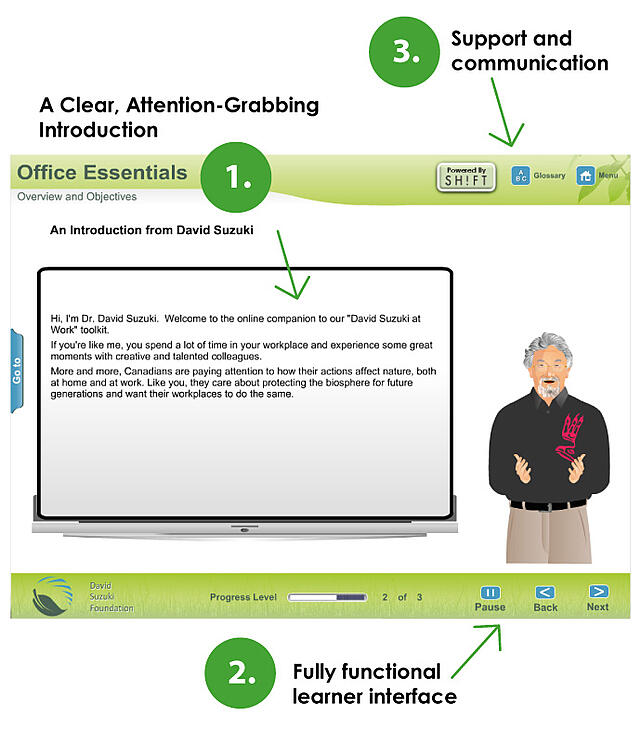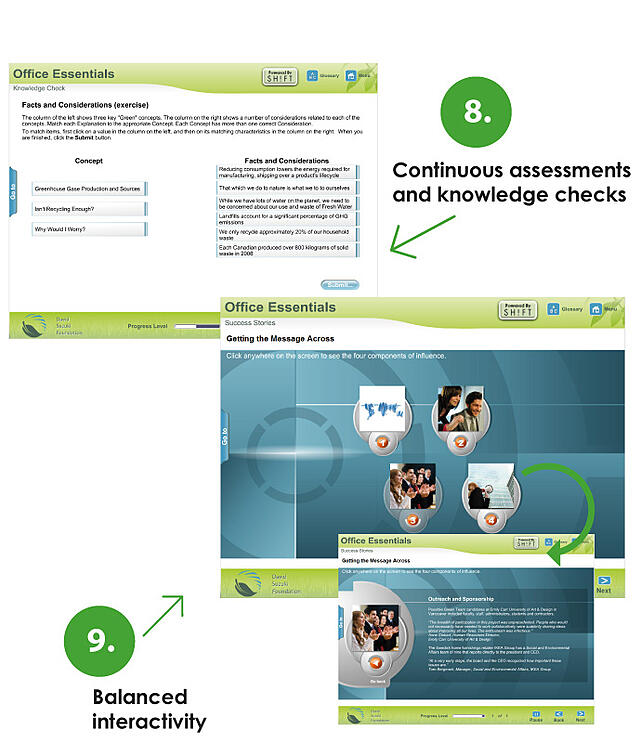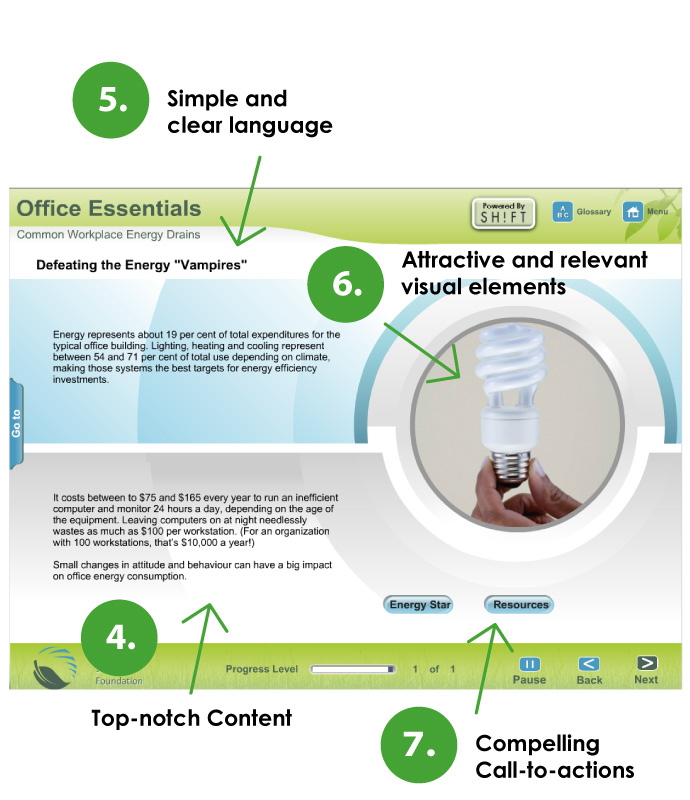Do you know what takes to create a truly effective eLearning course? Certainly, there's no magic formula for this, but to give you a good sense of the "must-have" elements and how to use them effectively, let's dissect the anatomy of an effective eLearning course.

1. A Clear, Attention-Grabbing Introduction
Create a great start by having one or more introductory screens that invite people to learn something new and finish your course. Your introduction has to include an overview of your course description, goals and student expectations. It has to explain why learners should invest hours to complete a course. More often than not, learners want to know what’s in it for them. What real benefits will they get from it? Tell them. Make sure to focus on their personal goals, not your company’s history. If you can, it helps to specify how much time and what type of skills are expected of students. This will help them determine if their learning styles match the course.
2. Fully functional learner interface
An attractive interface invites learners to start course; a fully functional one allows them to smoothly navigate through it and finish the course. You can effectively design a learner interface that’s usable and beautiful at the same time. This is what a functional portal is. It allows users to easily consume your content through carefully placed menus and navigation bars. Otherwise, a poorly designed interface may hinder students from completing the course. Make it easy for students to access your tools. Provide technical support, if necessary.
3. Support and communication
Online instructors are under the impression that eLearners want to study on their own and don’t need support. They’re mistaken. Students, many of whom are users of social platforms, expect immediate response. And because many of them are used to traditional face-to-face learning, they also expect instructors to be always available. Offer instant support through email or chat. Faculty preparedness and presence are often key to promoting continued participation in an online program.
4. Comprehensive yet relevant content
The content of the course is the most crucial part, because this is where your main information will be presented. Above all, make it relevant! Relevancy is the blood of a course's anatomy; it should run through the entire course. Any time you include information it should be as relevant to the content of your course as possible. It must be succinct, logical, and clearly divided through the effective use of color, graphics, and white space. So, mind the overall quality of your course content and get rid of boring and uninspired sections and activities.
5. Simple and clear language
It’s obvious why students stay away from technical jargons and ambiguous texts. They can’t learn anything from them. Or they make learning more difficult and time-consuming. Unambiguous and clear terms, on the other hand, allow students to learn fast and easy. Use simple and familiar language when defining words, explaining complex concepts, presenting dialogues and even labeling information.
6. Attractive and relevant visual elements
Online technologies including graphics, animations, video and sound are all rich and promising. When used effectively, they can easily hook learners to consume your course content and understand a subject or two in no time. Carefully select what visual elements to use. Some sections of the course can be summed up in an infographics or short explainer videos. Compelling pictures can also transform information-heavy courses into interesting stories.
7. Compelling call-to-actions
Entice learners to work on a particular activity through clear and effective CTAs. Ultimately, your focus should be on getting them use the course content. Encourage them to complete a module by including activities, interactive graphics, and thought-provoking questions at the start of each section.

8. Balanced interactivity
The level of interaction students experience while doing the course directly influences their level of motivation. Make use of games and other interactive features to keep them interested. What’s more, if you’re able to combine interactivity with good content, you can help them retain more information and thus maximize learning. Aim for balanced interactivity since too much interactivity can overwhelm users.
9. Continuous assessments and knowledge checks
Just because students are motivated to start doesn’t mean they will finish the course. Web-based instructors have to look after them and check their progress. Make sure to give relevant feedback and be present during live discussions. Constantly checking on existing learners during the entire program may even help you assess which areas or sections to improve on. This will definitely benefit future learners and improve retention rates.
What have you tried that’s made your eLearning course more effective?










